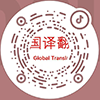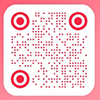Specific Solutions
Russian Translation Pricing Standards
With the growing frequency of Sino-Russian trade and cooperation, the demand for Russian translation services is rising across business negotiations, technical projects, legal contracts, and academic research. One of the most common questions clients ask is: “What are the pricing standards for Russian translation?”
This article explores the key factors that influence Russian translation fees, helping both clients and translators better understand the pricing landscape.
1. Language and Direction
Translation rates are often influenced by the supply and demand of the language. Russian is considered a niche language in China, and professional translators proficient in both Russian and Chinese are relatively limited. As a result, fees for Russian translation are generally higher than more common language pairs, such as English-Chinese.
Moreover, the translation direction—Chinese to Russian or Russian to Chinese—also impacts pricing. Translating into Russian requires precise expression and natural phrasing, while translating into Chinese demands thorough understanding of terminology and technical concepts. These differences are reflected in service rates.
2. Field of Expertise
The subject matter of the translation significantly affects complexity:
General Texts: Letters, brochures, and marketing materials require fluency and clarity, but involve minimal specialized terminology.
Business & Legal: Contracts, agreements, and investment documents demand accuracy and unambiguous language; translators often need a background in law or business.
Engineering & Chemical: Technical manuals, safety protocols, and equipment specifications contain complex industry-specific terminology.
Academic & Publishing: Research papers and books must meet scholarly or publishing standards and typically require multiple rounds of proofreading.
The more specialized the field, the higher the translator’s expertise required, which in turn affects fees.
3. Project Volume and Delivery Time
Project size and turnaround time are critical pricing factors:
Large-scale projects: May allow for negotiated rates but require effective team coordination and terminology consistency.
Rush projects: Completing high-quality translations under tight deadlines often requires additional manpower or overtime, which can increase the cost.
4. Service Type and Value-added Options
Beyond written translation, interpreting services are increasingly important. Accompanying interpretation, consecutive or simultaneous interpreting vary in rates depending on the occasion and difficulty.
Clients may also request additional services, such as:
Document formatting and layout
Graphs, charts, or scanned image text extraction
Certified translations or notarization
Multiple rounds of proofreading or native speaker review
These value-added services influence the overall cost of translation projects.
5. Considerations for Clients and Translators
For clients, understanding the reasoning behind translation fees helps balance budget and quality requirements, and ensures the selection of an appropriate service level.
For translators or translation agencies, setting transparent and reasonable fees builds trust and fosters long-term cooperation.
Conclusion
There is no fixed figure for “Russian translation fees.” Instead, pricing depends on a combination of factors: language scarcity, field complexity, project volume, delivery requirements, and additional services.
Clients should assess their project needs, including professional expertise and timeline, to select the most suitable service. High-quality translation is more than a language service—it is a bridge for cross-cultural communication and successful collaboration.


















